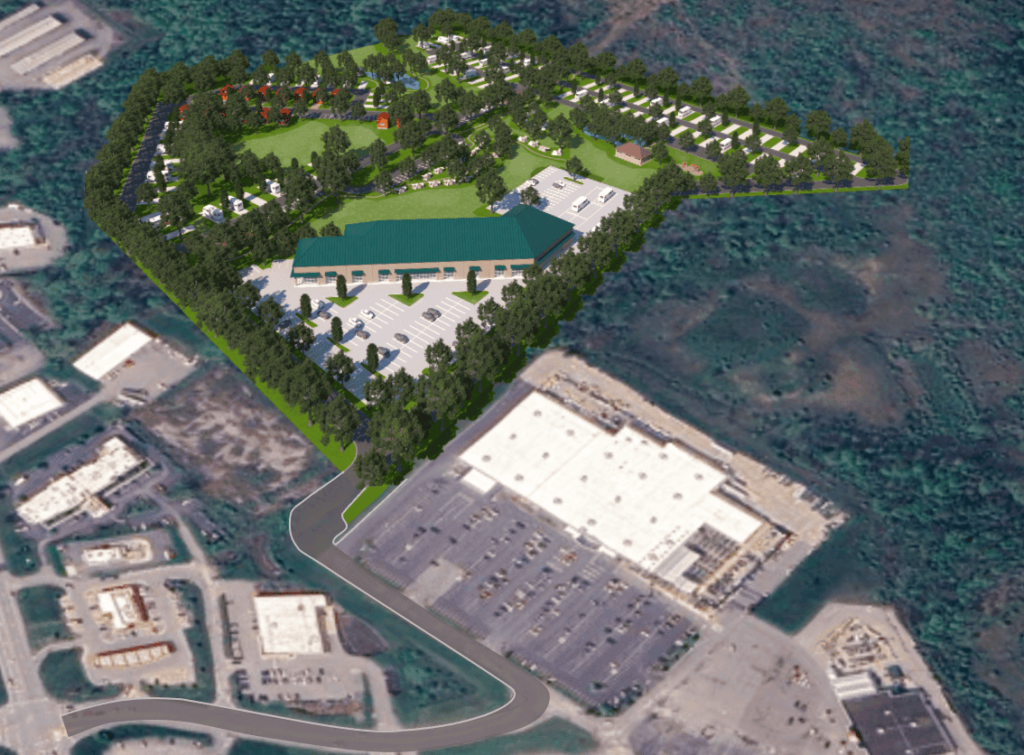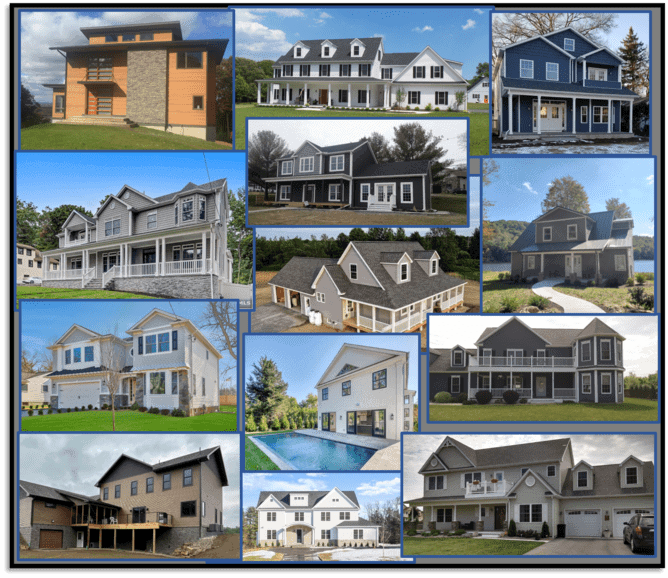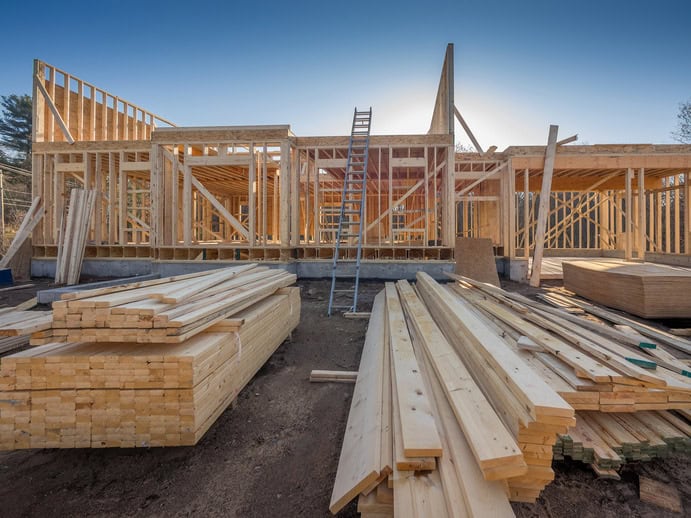The Vision

What’s the difference between “modular,” “prefab,” and “conventional” (or stick-built) homes, and is one approach superior to the others? This brief comparison breaks down the main pros and cons giving you an advantage in the marketplace and crucial insight for anyone considering purchasing a home now or in the future.
Modular Homes: The Gold Standard
Of the three construction types, today’s modular construction reigns supreme in quality, durability, energy efficiency, and long-term value, as a general standard. Built to meet or exceed state and local building codes, modular homes are constructed offsite in a climate-controlled setting. This results in tighter quality control, less exposure to weather damage, and accelerated construction timelines.
The streamlined controlled environment protects the components of modular homes from the elements during construction and facilitates a higher degree of precision and quality within an assembly-line fashion. This also enables the use of precision tools, equipment and machinery design to increase the speed of construction while enhancing rigidity and durability, and reducing the overall cost of production.
Once finished, modules are transported to the site, craned into place, affixed to each other, and attached on a permanent foundation. Modular homes can be customized with the same luxury materials and finishes as site-built homes. In fact, unless disclosed, it’s nearly impossible to differentiate a modular home from a conventional-built home.
Modular homes have come a long way in terms of design and customization options. In the past, they were often associated with a cookie-cutter appearance, but today, modular homes offer the same level of design flexibility as stick-built homes. Homebuyers can choose from a variety of architectural styles and floor plans, and even customize their modular homes to suit their specific needs and preferences.
Modular Homes Generally Provide the Following Advantages:
1. Shorter construction timelines
2. Cost savings
3. Superior quality control
4. Higher efficiency rating and insulation
5. Greater resistance to weather and damage during construction
6. Less waste and environmental impact
7. Customization capabilities
8. Reduced risk for the homebuyer
Can You Tell That The Homes Below Are Modular Homes?

* The above are modular homes produced by Custom Building Systems of PA
Myths About Modular Construction
Modular homes have gotten a bad rap over the years, with many people assuming they are flimsy, cheaply made, or low quality. However, the reality is that modular homes, like all home construction methods, come in a wide range of quality levels and construction standards.
As an example, the modular homes of Metrovitalization are deluxe-quality, semi-customizable homes that are indistinguishable from custom stick-built single-family homes, and offer the benefits of higher quality, reduced costs, and greater efficiency due to the modular process, as in the company’s Kingdom Place development, a new community of 24 deluxe-quality semi-customizable modular homes in NW Pennsylvania.
Correspondingly, standard-quality modular homes offer an affordable alternative with additional cost-saving measures that utilize less expensive, mass-produced materials and finishes with fewer customization options and simpler or more basic architectural details and aesthetics. While standard-quality modular homes may lack some of the higher-end and custom touches of deluxe-quality modular homes, they offer a more affordable price point. Champion Home Builders is an example of a reputable modular company that offers beautiful standard-quality modular homes.
Both, deluxe-quality and standard-quality modular homes can offer significant cost and time savings, as well as superior quality and durability over conventional stick-built homes and prefab homes. In an article published by the National Association of Realtors entitled “Modular Stacks Up to Stick-built” the various advantages of modular homes are discussed, including quality, engineering, greater sustainability, speed and savings. Modular homes are referred to as “America’s best kept secret” in the article.
Prefabricated (“Prefab”) Homes

Also referred to as manufactured homes or mobile homes, prefabs utilize lighter materials and cheaper finishes to accelerate production. Built on steel chassis with axles, prefabs maintain their mobility at the cost of structural integrity.
Thinner walls, floors, and roofs mean prefabs are drafty and energy inefficient. Unlike modular homes, which are assembled on a fixed foundation, prefabs are typically placed on shallow blocking rather than a permanent foundationwhich compromises stability. Prefabs also depreciate in value faster than modular or site-built alternatives.
While affordable, prefabricated homes fail to match the quality, durability and customization potential of either modular or conventional homes.
Conventional Stick-Built Homes

The tried-and-true method of wooden framework construction, stick-built homes provide endless customization flexibility. However, they lose out to modular homes when it comes to quality control, construction timelines, environmental impact and cost efficiencies. The onsite building process also makes them more vulnerable to weather delays and damage.
A recent article by Construction Today titled “Thinking outside the box – Modular versus stick-built, and the case for the future of construction“ highlights the advantages and efficiencies of modular construction, including its greener, faster, and more structurally sound nature, versus the conventional stick-built construction methods. It also discusses the flexibility and speed of design as major additional advantages of modular construction.
Conventional stick-built home construction is still the most popular construction method, however, modular construction is increasing on popularity as savvy homebuyers become aware of its advantages and benefits.
Conclusion
When prioritizing quality, durability, and energy efficiency, both modular and conventional construction outperform prefabricated homes. However, modular holds distinct advantages over stick-built in precision quality control, accelerated timelines, customization capabilities and cost savings. This makes modular construction a superior choice for many homeowners in 2024.
For deeper insight into the advantages of modular homes and how to own a new modular home, get a free excerpt of my book: “Modular Homes: The Smart Choice for Homebuyers in 2024”.
Numerous families and individuals may not realize that they can afford a new home. Instead, they often choose to purchase older, lower-quality properties, inadvertently missing out on the numerous advantages that new homes have to offer, including superior quality, enhanced healthiness, increased efficiency, greater durability, extended warranty coverage, and numerous other benefits. Exploring this option could prove to be a worthwhile benefit. With modular construction, you might be pleasantly surprised to find that many new modular homes are competitively priced compared to existing older homes in your community. I invite you to explore the benefits and possibilities with my free eBook: “Upgrade to a New-Construction Home You Can Afford Realistically”, available as a free download.



